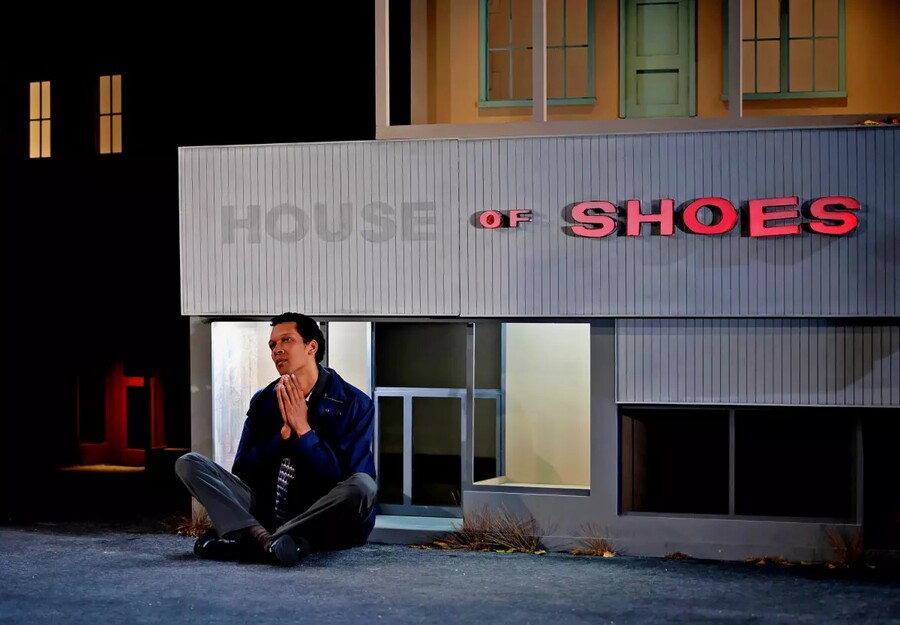Believe it or not, one of my favorite natural anti-depressants (aside from Trader Joe’s root beer float bars) is on Facebook. Every week we post two questions on American Theatre’s page: On Friday, we ask followers what show they plan to do or see over the weekend, and on Monday, we ask what show they’ve done or seen. Respondents to this simple prompt eagerly tout Broadway shows, high school musicals, readings of new work by small ensembles, festival binges, community theatre, comedy tours, performance art, and more, from all over the U.S. and beyond. It’s a natural impulse to share not only what you’re up to but what you’re into, so these posts are regularly filled with both performers and patrons enthused about their work, and occasionally congratulating and/or thanking each other.
The reason I find these posts heartening should be obvious, at a time when the art form and industry we cover seem battered by woes both economic and cultural. They aren’t hard data, but these posts show, against all odds, that theatre springs eternal.
Each summer we get a hard-data version of this thrill as we watch member theatres’ season programming pour in. This is true even when the signals are mixed. Our Fall Season Preview listings for 2024-25, printed in full at the back of the Fall issue, show robust activity—though it must be noted that the number of full productions at TCG member theatres for the 2024-25 season, 1,281, is down from last season’s 1,560, and is even below the 2022-23 season count of 1,298. All of these figures remain significantly below pre-pandemic levels: Our 2019-20 listings counted 2,229 productions at TCG member theatres. The contraction is real, and we’re all still feeling it. (This is true even if you add in the 176 productions we counted at commercial and non-TCG member theatres.)
Our Top 10 Most-Produced Plays and Top 20 Most-Produced Playwrights lists this year also show signs of retrenchment, if you choose to read them that way. You will see on these trend-spotting lists a fair number of small-cast shows, adaptations of popular mysteries and 19th-century novels, and crowd-pleasing musicals. But these trends are hardly new. Consider Heidi Schreck’s (still) blazingly timely What the Constitution Means to Me, a three-performer show which this year tops the most-produced list for the second year running. The last shows that pulled off that double act were the four-hander Doubt, in 2007 and 2008, and the three-hander Art, in 2000 and 2001.
And could the prickly, moving Constitution—or James Ijames’s heartful, impish Fat Ham, at the No. 2 spot—really be considered safe choices? Rajiv Joseph, tied with Kate Hamill as the season’s most-produced playwright, has an ingratiating two-hander about sports fans, King James, all over the U.S. in the coming season, but also Guards at the Taj, Archduke, The Lake Effect, and an exotic new thriller coming up at Manhattan Theatre Club, Dakar 2000. And for her part, the prolific Hamill has branched out from adapting Jane Austen to riffing irreverently on Bram Stoker (with Dracula: A Feminist Revenge Fantasy, Really) and Arthur Conan Doyle (with Ms. Holmes and Ms. Watson, Apt. 2B).
Even as the unstoppable Jersey Boys muscles its way back onto the lists, we’re also cheered to see another musical making its debut there: the tasty Jessie Nelson/Sara Bareilles tuner Waitress. Yes, American theatres, like Joe’s Pie Diner, are all too happy to serve up comfort food. Honestly, who can begrudge them? We would definitely get cranky if that’s all they had on the menu. But you don’t have to look far to see that some familiar dishes are getting some new ingredients. And you should definitely ask about the specials.
Rob Weinert-Kendt (he/him) is the editor-in-chief of American Theatre.
Support American Theatre: a just and thriving theatre ecology begins with information for all. Please join us in this mission by joining TCG, which entitles you to copies of our quarterly print magazine and helps support a long legacy of quality nonprofit arts journalism.





